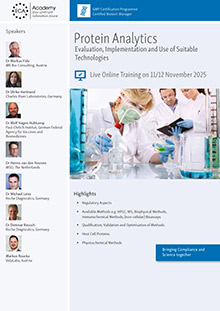Bioactivity Testing for ATMPs
Potency assays are crucial for the evaluation of the biological activity of drugs and thus also for cell and gene therapeutics. In the best case, bioactivity is associated with efficacy in patients. However, the development and validation of potency assays for cell and gene therapeutics presents challenges.
1. Product Complexity
Cell and gene therapeutics are often very complex and heterogeneous. Cell therapies consist of living cells that can have a variety of functions, while gene therapies introduce genetic materials that can trigger different effects in the target cells. This complexity makes it difficult to develop a single potency assay that covers all relevant aspects of product function. Particularly in the early phase, the mechanism of action (MoA) or the MoAs are not yet fully understood, which complicates the selection and development of suitable potency assays.
2. Variability of the Biological Systems
The biological variability in ATMPs is in most cases significantly higher than in classical protein therapeutics, e.g.: between cell batches. This variability complicates the establishment of potency assays, as on the one hand they should provide reliable results within SSC and acceptance criteria, but on the other hand they must also tolerate the variability of the product as long as this does not negatively affect efficacy in the patient and safety.
3. Measurement of the relevant Biological Activity
Due to their often complex mechanisms of action, ATMPs require a deep understanding of the relevant signalling pathways and biological processes relevant to the product. It is therefore important to acquire this knowledge at an early stage and, if necessary, to iteratively develop the strategy for potency determination.
4. In Vitro vs. In Vivo Tests
While in vitro tests are often more practical and cost-effective, they do not always reflect the complex interactions that occur in a living organism. It is therefore a challenge to develop in vitro potency assays that accurately reflect in vivo conditions and effects. However, both FDA and EMA now require compliance with 3Rs for release assays, so there is no alternative to implementation.
5. Regulatory Requirements
Regulatory requirements for potency assays for cell and gene therapeutics are stringent and vary by country. The assays must not only be scientifically sound and reproducible, but also meet the requirements of the regulatory authorities, which means additional complexity and effort. Furthermore, ATMPs do not fall under mutual recognition, so care must also be taken to ensure that they are approved in the right country.
6. Challenges
The development of potency assays often requires specialised techniques and equipment. Establishing and validating these methods can be time-consuming and costly. In addition, the assays must be robust enough to be validated according to ICH Q2(R2) and to be routinely used in a production environment.
7. Modern Tools to improve Reliability and Reproducibility
Both Quality by Design (QbD), as required by ICH Q14, and the use of AI help to set up new procedures so that they are suitable for use under GMP. Furthermore, implementation of automation is an important pillar in minimising variability.
8. Stability and Storage
Cell and gene therapeutics are often sensitive to environmental conditions such as temperature and light. Storage and transport must be selected and validated to ensure product stability and the functional potency assay must have sufficient "stability indicating properties" to reliably detect damage to the product. This is also part of the validation according to ICH Q2 (R2).
In summary, potency assays for cell and gene therapeutics require an integrative approach that combines scientific expertise, technical know-how and a deep understanding of regulatory requirements. Addressing these challenges is critical to ensure the safety and efficacy of these advanced therapies.
To address the increasing need for scientific and regulatory exchange, the ECA Academy, in collaboration with Concept Heidelberg and experts in the field of bioassays and potency assays, has decided to launch a European conference bringing together authorities, industry and laboratories. The Bioassay/Potency Assay Conference at the PharmaLab Congress on 26/27 November 2024 in Neuss offers a two-day lecture programme with corresponding opportunities for exchange and a platform to discuss current challenges and requirements with colleagues, speakers and representatives of the authorities. The current regulatory landscape will be presented as well as current case studies from industry and CRP covering the development and GMP implementation of potency assays, automation and digitalization.





